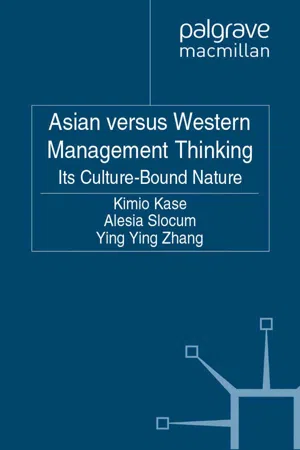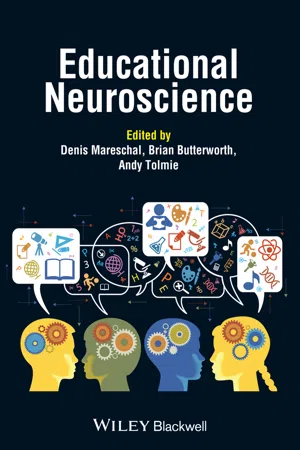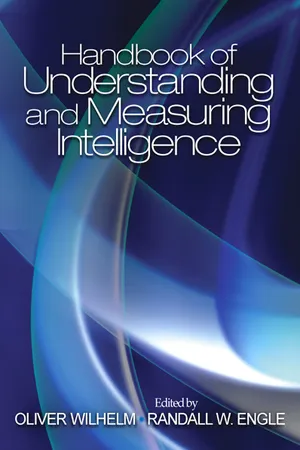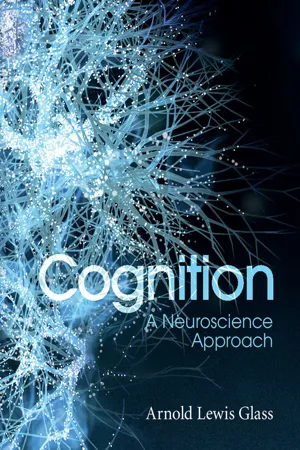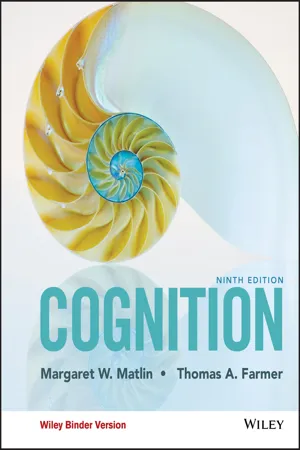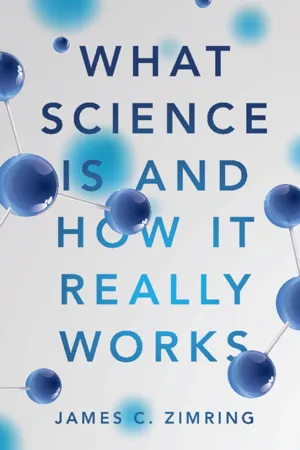Biological Sciences
Deductive and Inductive Reasoning
Deductive reasoning in biological sciences involves drawing specific conclusions from general principles or theories, often through the use of syllogisms. Inductive reasoning, on the other hand, involves making generalizations based on specific observations or evidence, leading to the formation of hypotheses or theories. Both types of reasoning are important in scientific inquiry, with deductive reasoning used to test hypotheses and inductive reasoning used to generate hypotheses.
Written by Perlego with AI-assistance
Related key terms
1 of 5
10 Key excerpts on "Deductive and Inductive Reasoning"
- eBook - PDF
- Koen Lamberts, Rob Goldstone, Koen Lamberts, Rob Goldstone(Authors)
- 2004(Publication Date)
- SAGE Publications Ltd(Publisher)
On the other hand, it might be a matter of probability theory – and this possi-bility is taken up in some of the research described below. Indeed, the existence of a probabilistic viewpoint on non-inductive reasoning tasks, as we have discussed above, raises the possibility that a unified approach across these diverse reasoning tasks might be achievable. Nonetheless, as we shall see, historically, inductive reasoning has typ-ically been studied separately from the reasoning tasks that we have described so far, by separate groups of researchers using different theoretical frameworks. Inductive reasoning involves drawing conclu-sions that are probably true, given a set of premises. Inductive reasoning can thus be con-trasted with deductive reasoning, in which the con-clusion must necessarily follow from a set of premises. For example, the following two argu-ments (5) and (6) each have some degree of induc-tive strength. Cows have sesamoid bones. (5) All mammals have sesamoid bones. Ferrets have sesamoid bones. (6) All mammals have sesamoid bones. Whereas all valid deductive arguments are perfectly strong, inductive arguments can differ in their per-ceived inductive strength. In the examples above, the conclusion in argument (5) may seem stronger, or more probable given the evidence, than the con-clusion in (6). Inductive reasoning is sometimes character-ized as drawing inferences from specific state-ments to more general statements (as in arguments (5) and (6)), in contrast to deductive reasoning which would run from general state-ments to specifics. Although there is a grain of truth in this characterization, there is actually a broader variety of deductive as well as inductive arguments (Skyrms, 1977). For example, the fol-lowing deductively valid argument (7) does not draw a more specific inference from general statements: Gorillas are apes. - eBook - ePub
Reasoning
The Neuroscience of How We Think
- Daniel Krawczyk(Author)
- 2017(Publication Date)
- Academic Press(Publisher)
• Knowledge influences inductive reasoning with similarity judgments affecting whether people will infer new information about a new instance based on information about a prior instance. • Inductive reasoning varies based on culture, which emphasizes that people’s background knowledge is critical for determining the types of inferences that they will make.• Inductive inferences do not guarantee valid reasoning, but many situations in life require that we draw these types of inferences. While they may not always be correct, they may better represent real-world behavior.Deductive and Inductive Reasoning
Introduction
Deductive and Inductive Reasoning have been considered to be core constructs in the study of reasoning. These forms date back to ancient times with clear roots in classical Greek philosophy. Aristotle emphasized the value of deductive reasoning as a source of powerful inferences in his writings. Deductive reasoning can reliably yield a valid conclusion based on the premises provided and the premises must also be valid for the approach to be successful. Inductive reasoning by contrast may yield a valid inference and is likely to move us beyond the current known information. Inductive reasoning comes with a price; however, in the form of a greater probability of an invalid inference if we inappropriately move beyond the information that we currently have. In other words, deduction is a safe bet moving us from currently known information to a relatively safe and valid conclusion, while inductive reasoning gives us a greater leap forward in terms of new knowledge, but comes with a greater opportunity for making erroneous conclusions.Our focus in this chapter will be on the types of psychological approaches that have been applied toward understanding deduction and induction. Experimental psychology differs from philosophy, the other main discipline associated with deduction and induction. While philosophy has focused on the certainty and the validity of these types of reasoning, the psychological approach has focused primarily on gaining experimental evidence. This means that the psychology of reasoning deals with the many complexities that arise when we attempt to use the deductive approach, the inductive approach, or a combination of the two. The outcomes of experiments have also led to theories of reasoning that then face the added challenge of ensuring compatibility with neuroscience and biological evidence, which we have already reviewed in detail in Chapters 3 and 7 - eBook - PDF
Asian versus Western Management Thinking
Its Culture-Bound Nature
- Kimio Kase, Alesia Slocum, Yingying Zhang(Authors)
- 2011(Publication Date)
- Palgrave Macmillan(Publisher)
This is the model for the whole history of science. (Locke, 2007: pp. 37–38) Ultimately, induction can be and is used quite effectively, especially in the social sciences, as it provides us with a way to advance within a subjective, relative and unpredictable social environment (Stadtler, 2004). However, it is precisely in regard to the cognitive frameworks that underpin our use of induction as a scientific method that we think Popper and Locke and others may have had a point worth investigating, and which we will develop further in this chapter. Deduction Deductive reasoning can be defined as a process of drawing logical conse- quences from premises. In this way, consequences or outcomes are derived 52 Asian versus Western Management Thinking from what is assumed. Essentially, it can be said to work in reverse order from induction. ‘It begins with an observed regularity that needs to be explained; a tentative theory is acquired or constructed; then hypotheses are deduced and then tested by collecting appropriate data’ (Blaikie, 2000: p. 100). Through deductive reasoning, we are seeking to determine a conclusion or outcome, and our role is to evaluate and refine hypotheses in doing so, based, of course, on having established other plausible premises in the first place. We can also use symbols to describe deduction, saying, for example: All As are Bs C is B Therefore, C is A Our symbolic statement is true if our premises are true, and we can verify them through falsifiability, that is if we can show that there is an example of them being false, then they are not true. Our task, then, is to evaluate empirical data (in this case, the value of these letters), using other concepts and premises we know to be true. The same can be stated with words, such that we can say: All men are mortal. Joe is a man. Therefore, Joe is mortal. The logic of deductive reasoning is straightforward: to test theories, to elim- inate false theories and to corroborate the surviving theory. - eBook - ePub
Your Mind and How to Use It
A Manual of Practical Psychology
- William Walker Atkinson(Author)
- 2013(Publication Date)
- Perlego(Publisher)
WE have seen in the preceding chapter that from particular facts we reason inductively to general principles or truths. We have also seen that one of the steps of inductive reasoning is the testing of the hypothesis by deductive reasoning. We shall now also see that the results of inductive reasoning are used as premises or bases for deductive reasoning. These two forms of reasoning are opposites and yet complementary to each other; they are in a sense independent and yet are interdependent. Brooks says: "The two methods of reasoning are the reverse of each other. One goes from particulars to generals; the other from generals to particulars. One is a process of analysis; the other is a process of synthesis. One rises from facts to laws; the other descends from laws to facts. Each is independent of the other, and each is a valid and essential method of inference."Halleck well expresses the spirit of deductive reasoning as follows: "After induction has classified certain phenomena and thus given us a major premise, we may proceed deductively to apply the inference to any new specimen that can be shown to belong to that class. Induction hands over to deduction a ready-made premise. Deduction takes that as a fact, making no inquiry regarding its truth. Only after general laws have been laid down, after objects have been classified, after major premises have been formed, can deduction be employed."Deductive reasoning proceeds from general principles to particular facts. It is a descending process, analytical in its nature. It rests upon the fundamental axiomatic basis that "whatever is true of the whole is true of its parts," or "whatever is true of the universal is true of the particulars."The process of deductive reasoning may be stated briefly as follows: (1) A general principle of a class is stated as a major premise; (2) a particular thing is stated as belonging to that general class, this statement being the minor premise; therefore (3) the general class principle is held to apply to the particular thing, this last statement being the conclusion. (A "premise" is "a proposition assumed to be true." - eBook - PDF
- Denis Mareschal, Brian Butterworth, Andy Tolmie, Denis Mareschal, Brian Butterworth, Andy Tolmie(Authors)
- 2013(Publication Date)
- Wiley-Blackwell(Publisher)
This suggests that the dominant consideration for decisionmak- ing was whether trajectories corresponded to rule-based expectations rather than perceptual experience. Importantly, these findings reveal that this ability to detect conflicts between our expectations and our perceptual experience when reasoning can sometimes lead us astray in that they can override an accurate perceptual input. That is, at least some of the time the influence of higher-order inferential processes can impede performance, as the perceptual responses are in fact accu- rate, and the considered responses are inaccurate (see also Howe, 1998; Howe, Tavares, & Devine, 2012). This point is important given the prevalence of miscon- ceptions of students up to and including the undergraduate level. Deductive Reasoning Alongside causal reasoning, deductive reasoning processes, which are thought to be one of the hallmark processes indexing rational thought (Evans, 2008), underlie much of scientific thinking. This involves reasoning processes that assess the degree to which a conclusion logically follows from stated information (i.e., prem- ises). Deductive reasoning is useful in the scientific enterprise as much of scientific thinking involves reasoning from known (i.e., previously established) information (Dunbar & Fugelsang, 2005). That is, scientists and laypeople alike assume that events in our world unfold due to the operation of stable and predictable rules, and they reason from these known and established rules to draw new conclusions based on new observations, using the tools offered through deductive reasoning. Deductive reasoning is a key component of scientific thinking, as it underlies much of how scientists make inferences about new discoveries. A contemporary example of deductive reasoning in scientific thinking was provided by Dunbar and Fugelsang (2005), with regard to the discovery of new planets in our solar - Oliver Wilhelm, Randall W. Engle, Oliver Wilhelm, Randall W. Engle(Authors)
- 2004(Publication Date)
- SAGE Publications, Inc(Publisher)
E MPIRICAL C LASSIFICATIONS OF R EASONING M EASURES In psychology, inductive reasoning has fre-quently been equated with proceeding from specific premises to general conclusions. Conversely, deductive reasoning has frequently been equated with proceeding from general premises to specific conclusions. This definition can still be found in textbooks, but it is outdated. There are inductive arguments proceeding from general premises to specific conclusions, and there are deductive arguments proceeding from specific premises to general conclusions. For example, the argument “Almost all Swedes are blond. Jan is a Swede. Therefore Jan is blond.” is an inductive argument that violates the above definition, and the argument “Jan is a Swede. Jan is blonde. Therefore some Swedes are blond.” is a deductive argument that also violates the above definition. According to Colberg et al. (1982), most established reasoning tests confound the direc-tion of inference (general or specific premises and general or specific conclusions) with deduc-tive and inductive reasoning tasks. By con-structing specific Deductive and Inductive Reasoning tasks (Colberg et al., 1985), they pre-sent correlational evidence that seems to support the unity of inductive and deductive reasoning tasks. However, reliability of the measures is very low; the applied method of disattenuating correlations is not satisfying; and, most impor-tant, Shye (1988) reclassifies their tasks and finds support for a distinction between rule-inferring and rule-applying tasks (see Chapter 18, this volume). In the initial classification and Measuring Reasoning Ability – • – 381 construction of tasks (Colberg et al., 1985), tests have been labeled as inductive when in fact they were probabilistic. Probabilistic tasks can, in principle, be deductive (Johnson-Laird, 1994a; Johnson-Laird, Legrenzi, Girotto, Legrenzi, & Caverni, 1999), and the probabilistic tasks used (Colberg et al., 1985) were in fact deductive tasks.- eBook - PDF
- John Chaffee(Author)
- 2018(Publication Date)
- Cengage Learning EMEA(Publisher)
Reasoning Critically 11 CHAPTER 461 Empirical Generalization Drawing conclusions about a target population based on observing a sample population Is the sample known? Is the sample sufficient? Is the sample representative? Fallacies Unsound arguments that can appear logical Causal Reasoning Concluding that an event is the result of another event Causal Fallacies Questionable cause Misidentification of the cause Post hoc ergo propter hoc Slippery slope Fallacies of Relevance Appeal to authority Appeal to tradition Bandwagon Appeal to pity Appeal to fear Appeal to flattery Special pleading Appeal to ignorance Begging the question Straw man Red herring Appeal to personal attack Two wrongs make a right Fallacies of False Generalization Hasty generalization Sweeping generalization False dilemma Scientific Method 1. Identify an event for investigation 2. Gather information 3. Develop a theory/hypothesis 4. Test/experiment 5. Evaluate results Inductive Reasoning Reasoning from premises assumed to be true to a conclusion supported (but not logically) by the premises © 2019 Cengage 462 Chapter 11 Reasoning Critically Inductive Reasoning Chapter 10 focused primarily on deductive reasoning , an argument form in which one reasons from premises that are known or assumed to be true to a conclusion that follows necessarily from the premises. In this chapter we will examine inductive reasoning , an argument form in which one reasons from premises that are known or assumed to be true to a conclusion that is supported by the premises but does not follow logically from them. When you reason inductively, your premises provide evidence that makes it more or less probable (but not certain) that the conclusion is true. The following statements are examples of conclusions reached through inductive reasoning: 1. A recent Gallup Poll reported that 74 percent of the American public believes that abortion should remain legal. - eBook - PDF
- Arnold Lewis Glass(Author)
- 2016(Publication Date)
- Cambridge University Press(Publisher)
You know a lot of things that you have never learned. If a pair of jeans are too small for you, then you will try on a larger size, not a smaller size, because you know that an even smaller size cannot fit you. Such a deduction is obvious, but it is not trivial. After all, it provides you with a strategy for finding a pair of jeans that fit. Deductive reasoning greatly expands what an individual knows about the world by making explicit information that is implicitly encoded in semantic memory. Reasoning involves both visual and verbal representation. The visual representation provides the intuitions that make many inferences possible, such as which jeans might fit. Deductive reasoning may be contrasted with inductive reasoning. Inductive reasoning is based on the intuition that things that are similar in some ways are similar in other ways as well, so that any one golden retriever will be as friendly as any other. As this example indicates, inductive reasoning is often used to predict behavior, and so is a core social skill. Human reason is directed by the prefrontal cortex. This should be obvious, since the prefrontal cortex directs all forms of cognitive processing, and human deduction and induction are forms of voluntary (mental) action. The decision system in the prefrontal cortex supplies the “Why?” to the “What?” of the instrumental system and the “How?” of the habit system. Human reason provides information about the world that supports effective voluntary action. A decision is a choice among different actions. • Human reason involves both visual and verbal inference. Visual representation is essential even for what appear to be verbal tasks. • Deduction about the truth of a statement often involves recollecting or generating an example or counterexample. • Tasks that require recollecting an example or counterexample from semantic memory for a familiar situation rapidly produce a usually accurate answer. - eBook - PDF
- Margaret W. Matlin, Thomas A. Farmer(Authors)
- 2016(Publication Date)
- Wiley(Publisher)
Therefore, we draw the logical conclusion, “Jenna cannot enroll in Biopsychology next semester.” It is also likely that you use decision making more frequently. During decision making, you assess information and choose among two or more alternatives. Many decisions are trivial: Do you want mustard on your sandwich? Other decisions are momentous: Should you apply to graduate programs for next year, or should you try to ind a job? The topics of problem solving (Chapter 11), deductive reasoning, and decision making are all interrelated, and we will note several similarities among these tasks throughout this chapter. All three topics are included in the general category called “thinking.” Thinking requires you to go beyond the information you were given. Thinking typically involves a goal such as a solution, a belief, or a decision. In other words, you begin with several pieces of information, and you must mentally transform that information so that you can solve a problem, draw a conclusion about a deductive reasoning task, or make a decision. In this chapter, we irst explore deductive reasoning, focusing heavily on a series of classic effects that help reveal the general cognitive principles governing our ability to deduce. In the following two sections, we cover the topic of decision making. We’ll irst consider a number of heuristics that guide our decision-making process. In our second section on decision making, we’ll consider a series of phenomena that have direct applications to decision making in our daily lives. DEDUCTIVE REASONING In deductive reasoning, you begin with some speciic premises that are true, and you need to judge whether those premises allow you to draw a particular conclusion, based on the principles of logic (Halpern, 2003; Johnson-Laird, 2005a; Levy, 2010). A deductive-reasoning task provides you with all the information you need to draw a conclusion. - eBook - PDF
- James C. Zimring(Author)
- 2019(Publication Date)
- Cambridge University Press(Publisher)
being governed by rules, at least to some extent, in order to be the object of scientific study is discussed in broader detail later in Chapter 5. ( . . .) Formal deduction has very specific requirements and properties, as described in Chapter 1. While a HD model of science has some descriptive relevance to science, in many cases, the link that prac- ticing scientists make between hypotheses and prediction is certainly a type of reasoning, but cannot conform to the formal definitions of deduction. This is especially the case in more complex systems – the more complicated the system, the more difficult it is to maintain any real deductive coherence. For a highly controlled and specific experi- ment, one may have a very distinct HD construct, but once one brings the variables of the real world to play on the system, introducing numerous complexities, the likelihood of maintaining formal deduc- tion becomes less and less. Nevertheless, the systems must maintain the ability to use distinct reasoning to make testable predictions, and if the predictions do not hold, it must force some change in the web of belief by the reasoning that is being used. One might call such a model hypothetico-predictive instead of hypothetico-deductive, to reflect that reasoning leads to predictions, even if not formal deductions. We shall continue to use the term HD, while recognizing that formal deduction may not always be at play. However, reasoning is certainly at play. This means that mistaken human reasoning would be one way in which the web of belief might be flawed, and by which HD we could undertake a repeat study of how they act under different controlled circumstances, and recording probabilities of outcomes and results, then it may be possible to bring supernatural or alien cognitions into the realm of scientific study.
Index pages curate the most relevant extracts from our library of academic textbooks. They’ve been created using an in-house natural language model (NLM), each adding context and meaning to key research topics.


